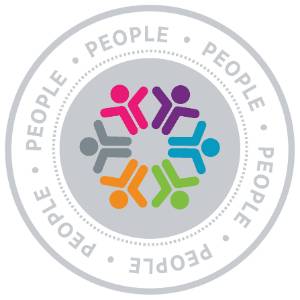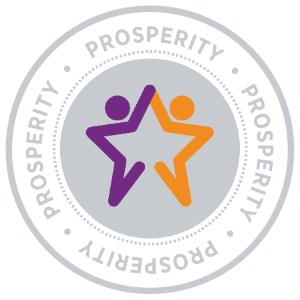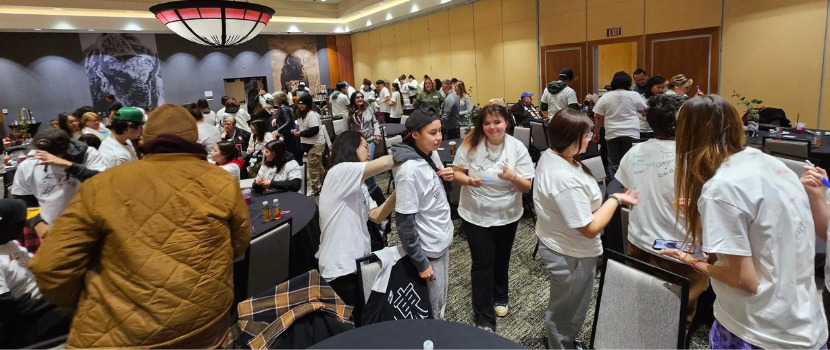
Inaugural event part of applied research project aimed at enhancing well-being of youth living in rural and remote communities.
Earlier this October, 68 youth aged 14-18 travelled from small, on- and off-reserve communities to the Dakota Dunes resort at Chief Whitecap First Nation near Saskatoon for a wellness summit—the first of its kind in the province. The three-day summit was conceived by Saskatchewan Polytechnic researcher Lindsey Boechler along with partners collaborating on a larger initiative aimed at enhancing the well-being of Indigenous young people living in rural and remote communities.
Building on successes and lessons learned from a smaller event the team hosted in collaboration with East Central First Nations Education Partnership for students from James Smith Cree Nation last November, Boechler and her team engaged with community leaders and partnered with school administrators across Saskatchewan to recruit participants for a larger event that would bring more youth together for an immersive, in-person experience.
“We worked closely with all of our partnering schools in the months leading up to the summit to register students and conduct a baseline assessment of students planning to attend,” explains Boechler. “It was important to explain our intent and receive informed consent from potential participants and their guardians.
Over two and a half days, participating youth met with Indigenous leaders and role models, and took part in breakout sessions on a range of wellness topics from physical movement and writing to alcohol awareness, traditional approaches to healing and self-advocacy. The small-group environment meant that participants felt secure getting to know others and sharing their experiences with peers from similar backgrounds.
The youth had many session options to choose from—some cultural, some creative, some more serious—with sessions led by CrossFit 16, SK Indigenous Yoga Association, Saskatchewan Prevention Institute, Saskatchewan Advocate for Children and Youth, a specialist in play therapy and Elders with expertise in art and healing circles.
Feedback from participants was positive. “I really liked connecting with the other youth from different reserves,” said one. “The best part was the healing circle. It was so powerful,” said another.
“Putting together an event of this scale required support from many partners,” says Boechler, who sought engagement from the SK Prevention Institute, SK Advocate for Children and Youth, Community Initiatives Fund and the Saskatchewan Psychiatric Association in addition to her major research funders. Dr. Madeline Press, Boechler’s project advisor and director for the Sask Polytech Centre for Health Research, Innovation and Scholarship (CHRIS), agrees, noting, “This work, including the youth summit, wouldn’t be possible without all of our partners—both community and industry—and key funding support from the agencies such as the Natural Sciences and Engineering Research Council of Canada (NSERC), the Saskatchewan Centre for Patient-Oriented Research (SCPOR), and the Saskatchewan Health Research Foundation (SHRF). We are grateful for their support of this important initiative.”
A research manager at CHRIS, Boechler has been steadily building towards a larger applied research goal to address the mental health and wellness of Indigenous youth. The summit is one component of an overarching initiative she has been spearheading over the past few years. She and her team are taking a multi-pronged approach, interweaving face-to-face and virtual activities with the goal of enhancing access to care while preserving Indigenous cultures and languages. “Isolation, disconnection from culture, and intergenerational trauma influence mental health, and the resulting high rate of suicide amongst our Indigenous youth is well known,” shares Boechler. “We’re focused on working alongside youth to co-create evidence-based solutions to address these challenges, and we’re testing new technologies to help solve some of the unique challenges that remote geographic locations pose.”
Bringing youth together for a wellness summit created a unique learning opportunity both for the participants and for researchers. Says Boechler, “The ultimate goal of this project and the larger one it feeds into is ensuring that appropriate resources are developed that meet the diverse needs of adolescents residing in rural and remote communities across Saskatchewan. It’s imperative that we engage with and seek input from the knowledge users who stand to benefit from them.”
Raquel Chaboyer, mental health therapist with Shoal Lake Cree Nation’s Wacihk Education Complex, was one of the chaperones who took four students to the summit. “From what I heard on the ride back to the community, the students really enjoyed themselves,” she says, and adds, “It’s an amazing thing Lindsey and her team have been doing. In Shoal Lake there are very limited resources for mental health. She has been in these communities to see for herself the types of struggles our students are experiencing. It’s important for researchers to come and see for themselves so they can understand what northern and rural first nations kids face.”
Engagement with youth and community has been at the center of Boechler’s research activities in this field and is guiding the development of a virtual reality (VR) wellness tool she and her team are exploring. As part of the summit, all participants were invited to take part in a session led by research partner Luxonic Technologies, the company Boechler has engaged to help develop the high-tech platform. “Research recommendations pertaining to Indigenous youth mental health call for alternative, innovative approaches to mental health care and highlight the importance of building relationships and creating connection,” she says. Participants in Boechler’s initial research have expressed excitement about the possibilities of leveraging VR technology to support their well-being. Together, researchers and participants are actively melding innovative technology with the very human connections between the youth, their communities and culture.
In the weeks following the summit, Boechler and her team will capture short segments from the presentations to add to VR headset software, which she will deliver to each of the 14 participating communities—La Loche, Buffalo Narrows, Red Earth Cree Nation, Punnichy, Shoal Lake Cree Nation, Cumberland House, Waterhen Lake First Nation, Clearwater Dene First Nation, Buffalo River Dene Nation, Birch Narrows Dene Nation, English River First Nation, Makwa Sahgaiehcan First Nation, Ministikwan Lake Cree Nation and Canoe Lake First Nation. Once there, she will also work with participants from each community to record new segments. “We started developing VR wellness resources for Indigenous youth in collaboration with La Loche Dene High School last year,” explains Boechler. “We’re now ready to start testing the technology more widely and co-creating more content with our additional community partners.”
Boechler’s research team, which includes psychiatric nursing faculty and students from Sask Polytech and researchers from the University of Saskatchewan and University of Regina, will spend the next year evaluating the youths’ use of the VR headsets—data that will inform the next phase of research and development. “Our research isn’t linear,” notes Boechler, “it’s more helical. We are testing what we learn at each step and our research is taking shape based on each exploratory phase. We surveyed summit participants one week before they came using a validated youth Depression, Anxiety and Stress Scale (DASS-21 youth) and WHO Wellbeing Index measurement tools to give us somewhat of a baseline of the students' wellness status. We plan to re-survey participants three and six months following the summit.
“As of right now,” she explains, “participants will only have access to a library of VR recordings but we are hoping to evolve the technology into a live platform that can offer synchronous workshops, counselling, support groups and even a social platform for youth to stay in touch after meeting in person at events like wellness summits.”
As the summit wrapped up, participants were led by Sask Polytech School of Nursing students in a “Who am I?” T-shirt exercise, where they wrote messages on each others’ backs expressing what they had learned about each other. ”Smart, self aware” reads one, and "strong leadership skills, brave,” reads another. Boechler and her team are pleased with the first provincial youth wellness summit and hope to repeat it.
Learn more about applied research at saskpolytech.ca/research.
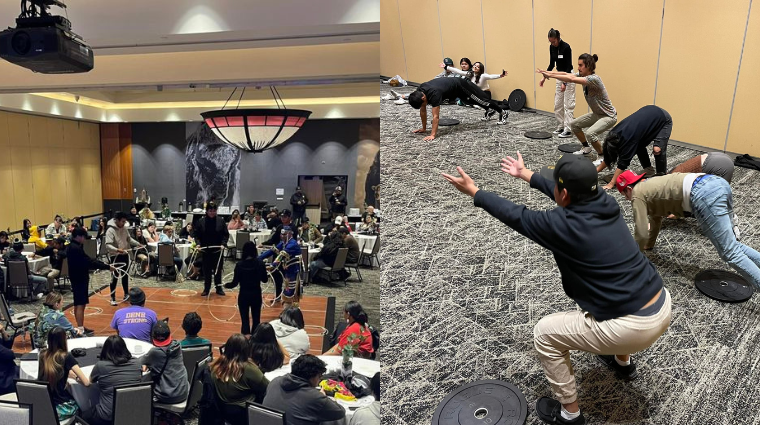
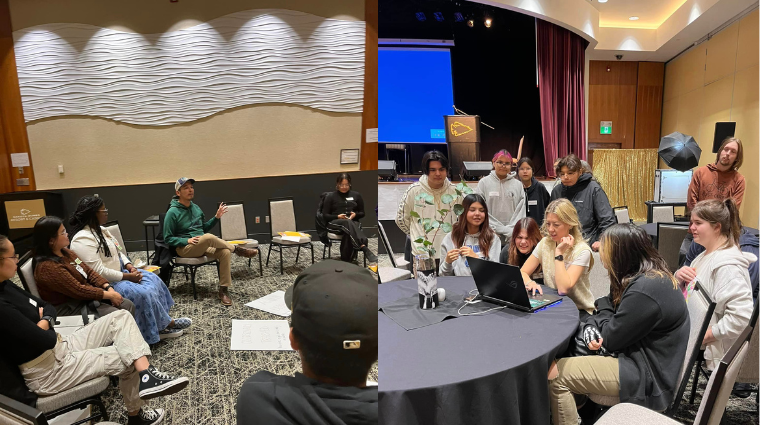
Saskatchewan Polytechnic is signatory to the SDG Accord. Sustainable Development Goal alignment is one of the ways Sask Polytech is leading the rise of polytechnic education.
